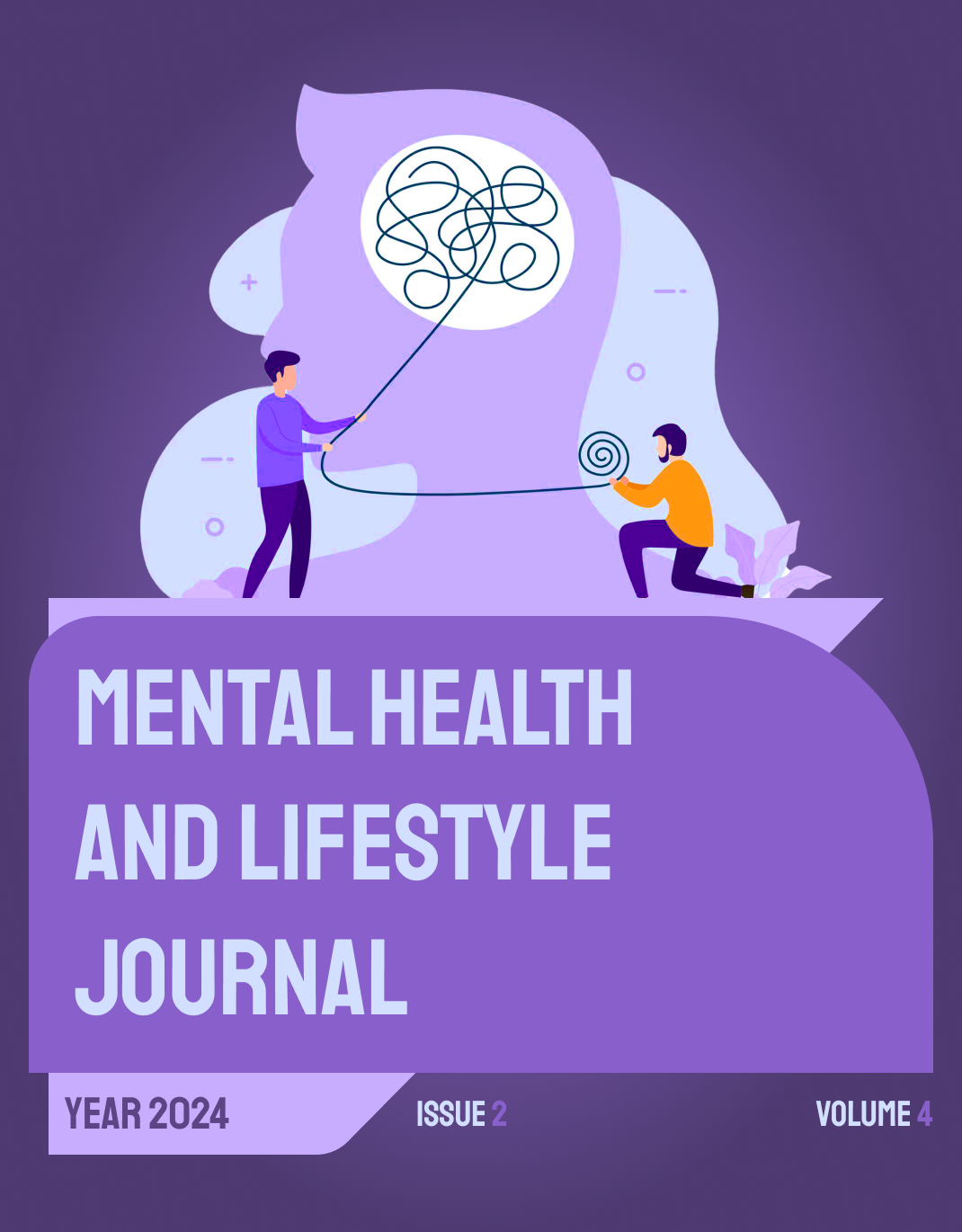The Effectiveness of Cognitive-Behavioral Therapy on Emotional Processing and Selective Attention in Children with Learning Disabilities
Keywords:
Cognitive-Behavioral Therapy, Selective Attention, Emotional Processing, Learning Disabilities, Children, Executive FunctionAbstract
This study aimed to examine the effectiveness of cognitive-behavioral therapy (CBT) on improving emotional processing and selective attention in children with learning disabilities. A randomized controlled trial was conducted with 30 children (aged 9–12) diagnosed with learning disabilities in Tehran, Iran. Participants were randomly assigned to an experimental group (CBT; n = 15) and a control group (n = 15). The CBT program consisted of ten 90-minute sessions implemented over five weeks. Standardized tools—the Emotional Processing Scale for Children (EPS-C) and the Stroop Color-Word Test (SCWT-C)—were used to assess the dependent variables at three time points: pre-test, post-test, and five-month follow-up. Data were analyzed using repeated measures ANOVA and Bonferroni post-hoc tests via SPSS version 27. The results revealed significant time × group interaction effects for both emotional processing (F(2, 56) = 18.59, p < .001, η² = .40) and selective attention (F(2, 56) = 15.78, p < .001, η² = .36). Post-hoc analysis indicated that the CBT group showed significant improvements in emotional processing from pre-test to post-test (MD = 10.16, p < .001) and to follow-up (MD = 11.22, p < .001), with similar significant gains in selective attention (pre-test to post-test: MD = -7.83, p < .001; to follow-up: MD = -7.24, p < .001). No significant changes were observed in the control group. The findings demonstrate that cognitive-behavioral therapy is an effective intervention for enhancing emotional regulation and selective attention in children with learning disabilities, with sustained effects observed over a five-month period. The study supports the integration of CBT-based programs into psychoeducational services for this population.
Downloads
References
1. Mills AL, Aquino GA, Hoegler S, Cummings EM. Interparental Conflict, Emotional Insecurity, and Parent–Adolescent Communication. Journal of Family Issues. 2020;42(10):2377-96. doi: 10.1177/0192513x20980035.
2. Ching BH, Wu X. Parental Conflicts and Materialism in Adolescents: Emotional Insecurity as a Mediator. Journal of Adolescence. 2018;69(1):189-202. doi: 10.1016/j.adolescence.2018.07.019.
3. Colton KC, Godleski SA. Socialization of Adolescent Emotion Regulation Through Interparental Conflict: Adolescent Versus Parent Report. Family Relations. 2024;74(1):163-79. doi: 10.1111/fare.13121.
4. López‐Larrosa S, Sánchez-Souto V, Ha AP, Cummings EM. Emotional Security and Interparental Conflict: Responses of Adolescents From Different Living Arrangements. Journal of Child and Family Studies. 2019;28(5):1169-81. doi: 10.1007/s10826-019-01364-1.
5. Bergman KN, Choe GE, Cummings EM, Davies PT. The Ubiquitous Family Environment: Examining Emotional Insecurity in the Family and Adjustment in School. Family Court Review. 2018;56(2):234-47. doi: 10.1111/fcre.12337.
6. Dragomir AM. The Importance of Coparental Behaviors in the Development of Children’s Emotional Security. Psihologia Revista Științifico-Practică = Psychology Scientific-Practical Journal. 2024;45(2):16-23. doi: 10.46728/pspj.2024.v45.i2.p16-23.
7. Kosutić Z, Mitković-Vončina M, Dukanac V, Lazarević M, Raković-Dobroslavić I, Soljaga M, et al. Attachment and Emotional Regulation in Adolescents With Depression. Vojnosanitetski Pregled. 2019;76(2):129-35. doi: 10.2298/vsp160928060k.
8. Veena KP, Noufal P. Emotional Integration and Social Security of Adolescents at Higher Secondary Level. Shanlax International Journal of Education. 2020;9(1):86-91. doi: 10.34293/education.v9i1.3490.
9. Jiménez-Rodríguez T, Barrera Udl, Schoeps K, Valero‐Moreno S, Montoya‐Castilla I. Longitudinal Analysis of Adolescent Adjustment: The Role of Attachment and Emotional Competence. Children. 2022;9(11):1711. doi: 10.3390/children9111711.
10. Jacoby VM, Krackow E, Scotti JR. Betrayal Trauma in Youth and Negative Communication During a Stressful Task. The International Journal of Aging and Human Development. 2016;84(3):247-75. doi: 10.1177/0091415016669724.
11. Yang R, Gu Y, Cui L, Li X, Way N, Yoshikawa H, et al. A Cognitive Script Perspective on How Early Caregiving Experiences Inform Adolescent Peer Relationships and Loneliness: A 14‐year Longitudinal Study of Chinese Families. Developmental Science. 2024;27(6). doi: 10.1111/desc.13522.
12. Andretta JR, McKay MT, Harvey S, Perry JL. Inventory of Parent and Peer Attachment–Revised Scores in Adolescents: A Psychometric and Person‐Oriented Study. Family Relations. 2017;66(3):527-40. doi: 10.1111/fare.12252.
13. Yanti RAP, Mariyati LI. Relationship of Secure Attachment to Fathers and Mothers With Emotional Intelligence in Junior High School Adolescents. Indonesian Journal of Innovation Studies. 2023;21. doi: 10.21070/ijins.v21i.800.
14. Venta A, Sharp C, Shmueli‐Goetz Y, Newlin E. An Evaluation of the Construct of Earned Security in Adolescents: Evidence From an Inpatient Sample. Bulletin of the Menninger Clinic. 2015;79(1):41-69. doi: 10.1521/bumc.2015.79.1.41.
15. Carapeto M, Domingos R, Veiga G. Attachment and Depressive Symptoms in Adolescence: The Mediatory Role of Emotion Awareness. Behavioral Sciences. 2022;12(10):405. doi: 10.3390/bs12100405.
16. Smith RM, Dys SP, Moretti MM. Fathers’ Emotion Regulation, Mindful Parenting, and Adolescent Attachment Quality. 2023. doi: 10.31234/osf.io/myc3k.
17. Muslima A. Phobia Impacts on Adolescents' Psychological Security: A Psychoanalytic Approach. Academia Open. 2023;8(1). doi: 10.21070/acopen.8.2023.6579.
18. Faryal Youssef Al-Khatib Mohammad Ali A. The Relationship of Self Assertiveness in Psychological Security and Emotional Intelligence Among a Sample of Middle Adolescence Students in North Jordan: علاقة توكيد الذات بالأمن النفسي والذكاء الانفعالي لدى عينة من طلبة مرحلة المراهقة المتوسطة في شمال الأردن. مجلة العلوم التربوية و النفسية. 2021;5(30):119-46. doi: 10.26389/ajsrp.m030221.
19. Asgola S, Kaur S. Psycho-Social Problems Among the Adolescent Girls Experiencing Sexual Harassment in Punjab. Asian Journal of Home Science. 2018;13(1):1-10. doi: 10.15740/has/ajhs/13.1/1-10.
20. Zimmermann P, Spangler G. Effects of Gene × Attachment Interaction on Adolescents’ Emotion Regulation and Aggressive Hostile Behavior Towards Their Mothers During a Computer Game. Frontiers in Human Neuroscience. 2016;10. doi: 10.3389/fnhum.2016.00254.
21. Xie D, Lu J, Xie Z. Online Emotion Regulation Questionnaire for Adolescents: Development and Preliminary Validation. Social Behavior and Personality an International Journal. 2015;43(6):955-65. doi: 10.2224/sbp.2015.43.6.955.
Downloads
Published
Submitted
Revised
Accepted
Issue
Section
License

This work is licensed under a Creative Commons Attribution-NonCommercial 4.0 International License.










